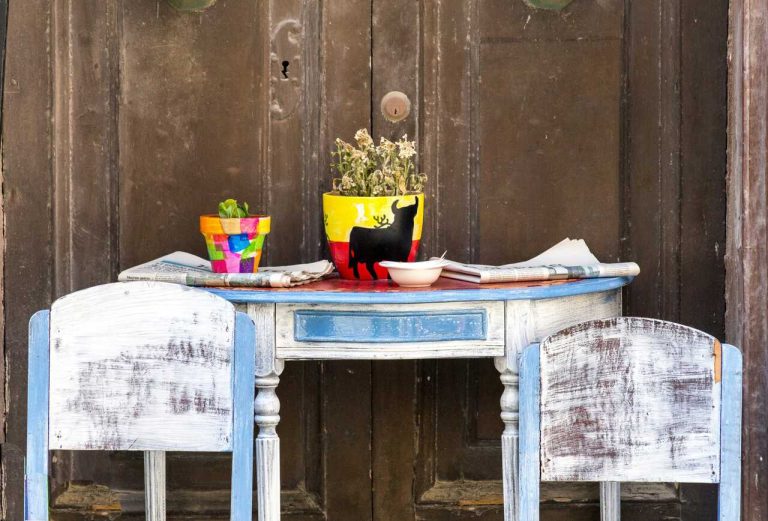
Hypothetical Speech for Spanish (Subjunctive Explained)
DATE:
The Spanish subjunctive often feels like the grammar world’s unicorn: mysterious, beautiful, and just a little elusive. Yet, mastering it opens the door to some of the most expressive and dynamic parts of the language. Whether you’re dreaming aloud, making a wish, or diving into hypothetical scenarios, the subjunctive lets you explore the “what could be” rather than the “what is.”
If you’ve ever felt unsure about how to use the subjunctive or wondered why it even exists, don’t worry—you’re not alone. Let’s take a moment to refresh what makes this mood special and how it transforms communication in Spanish.
Refresh: What is the Subjunctive?
The subjunctive isn’t a tense like the past or future; it’s a mood—a grammatical way of expressing attitudes, emotions, and possibilities. It contrasts with the indicative mood, which is all about stating facts and certainty. The subjunctive, however, dives into uncertainty, doubt, hope, or unrealized scenarios.
Compare these two moods:
Indicative: Él come en casa. (He eats at home.)
A simple fact, straightforward and grounded in reality.
Subjunctive: Ojalá que él coma en casa. (I hope he eats at home.)
This expresses a wish—it might happen, or it might not.
DID YOU KNOW…?
The key difference between the subjunctive and indicative moods lies in certainty: while the indicative states facts or describes reality, the subjunctive explores uncertainty, emotions, or hypothetical possibilities. It’s like comparing what is versus what could be!
Key Features of the Subjunctive
The subjunctive is triggered by certain verbs, phrases, and situations, often introduced by que or si. It’s used in contexts where:
- The outcome is uncertain: Es posible que lleguen tarde. (It’s possible they will arrive late.)
- There’s an emotional or subjective perspective: Espero que estés bien. (I hope you are well.)
- Hypothetical or imaginary situations are described: Si fuera rico, viajaría por el mundo. (If I were rich, I’d travel the world.)
Subjunctive Conjugation Basics
To form the present subjunctive, start with the yo-form of the verb in the indicative, drop the ending, and add subjunctive-specific endings. For example:
- Hablar (to talk): Yo hable, tú hables, él/ella hable, nosotros hablemos, vosotros habléis, ellos hablen.
The subjunctive might feel unfamiliar at first, but it’s a key tool for capturing life’s uncertainties and aspirations. By understanding its foundation, you’ll be ready to explore its fascinating uses in expressing dreams and hypothetical scenarios.
Importance of the Subjunctive in Hypothetical Expressions
Why is the subjunctive so important for talking about hypothetical situations? Imagine wanting to say, “If I were rich, I’d buy a yacht.” Without the subjunctive, your Spanish would feel incomplete or downright incorrect. The subjunctive lets you explore unreal scenarios and fantastical “what if” situations with clarity and precision.
Here are a few key reasons it’s essential for hypotheticals:
- Expressing Unreality: You can discuss things that aren’t real (but wouldn’t it be nice if they were?).
- Dreaming Big: Want to express aspirations or wishes? The subjunctive is your go-to.
- Adding Nuance: It lets you sound more natural and sophisticated in conversation.

Using the Subjunctive for Hypothetical Scenarios
Conditional Sentences with the Subjunctive
Conditional sentences allow you to dip into the world of “what ifs.” They usually involve two parts: the condition (usually in the imperfect subjunctive) and the result (in the conditional).
Example:
- Si tuviera dinero, viajaría por el mundo. (If I had money, I would travel the world.)
Here’s a breakdown:
- Imperfect Subjunctive for the condition: tuviera (had).
- Conditional for the result: viajaría (would travel).
|
Subject |
Tener (to have) |
Viajar (to travel) |
|---|---|---|
|
Yo |
Tuviera |
Viajara |
|
Tú |
Tuvieras |
Viajaras |
|
Él / Ella / Usted |
Tuviera |
Viajara |
|
Nosotros |
Tuviéramos |
Viajáramos |
|
Vosotros |
Tuvierais |
Viajarais |
|
Ellos |
Tuvieran |
Viajaran |
Wishes and Desires
The subjunctive mood truly shines when expressing wishes and desires. Words like ojalá (hopefully) and que (that) are key players here.
Examples:
- Ojalá que ganes el partido. (I hope you win the match.)
- Espero que ella venga. (I hope she comes.)
In these cases, the verb following ojalá or espero que is in the subjunctive because the outcome is uncertain. You’re expressing hope, not a guarantee.
Key Verbs and Constructions in the Subjunctive
Common Verbs that Trigger the Subjunctive
Certain verbs and expressions act like flashing neon signs for the subjunctive, signaling that it’s time to switch into this mood. These verbs often involve emotions, doubt, or desire.
Here are some of the most common triggers:
- Querer que (to want that): Quiero que estudies más. (I want you to study more.)
- Esperar que (to hope that): Espero que tengas éxito. (I hope you succeed.)
- Sugerir que (to suggest that): Sugiero que hables con tu Dedicated Teacher. (I suggest you talk with your Dedicated Teacher.)
- Es posible que (it’s possible that): Es posible que llueva mañana. (It’s possible it will rain tomorrow.)
- Dudar que (to doubt that): Dudo que él sepa la respuesta. (I doubt he knows the answer.)
These verbs share one thing in common: they deal with uncertainty, possibility, or subjective perspectives.
DID YOU KNOW…?
The subjunctive has been a favorite tool of poets and songwriters for centuries, helping to evoke emotions and capture the essence of the human condition.
Constructing Hypotheticals with the Subjunctive
Now that we’ve covered the basics, let’s get into the nuts and bolts of forming hypothetical sentences using the subjunctive.
Formula for Hypotheticals
- Si (if) + imperfect subjunctive for the condition.
- Conditional tense for the result.
Example:
- Si pudiera volar, visitaría cada continente. (If I could fly, I would visit every continent.)
Conjugation Refresher: Imperfect Subjunctive
Take the third-person plural form of the preterite, drop the “-ron,” and add these endings:
- -ra, -ras, -ra, -ramos, -rais, -ran.
Example with hablar (to talk):
- Hablara, hablaras, hablara, habláramos, hablarais, hablaran.
Conditional Tense Basics
Add these endings to the infinitive form of the verb:
- -ía, -ías, -ía, -íamos, -íais, -ían.
Example with comer (to eat):
- Comería, comerías, comería, comeríamos, comeríais, comerían.
By mastering these patterns, you’ll be able to tackle a wide range of imaginary scenarios, whether realistic or fantastical.
Practical Applications of the Subjunctive in Everyday Communication
Everyday Conversations
The subjunctive isn’t just for formal writing or abstract thoughts—it’s alive and well in daily conversations. Here’s how you might encounter it:
- Suggestions: ¿Y si fuéramos al cine esta noche? (What if we went to the movies tonight?)
- Recommendations: Te recomiendo que pruebes la paella. (I recommend you try the paella.)
- Hypotheticals in Small Talk: Si hubiera más tiempo, leería más libros. (If there were more time, I would read more books.)
Mastering the subjunctive will make your interactions smoother and more dynamic. It’s a small effort with a big payoff in terms of fluency.
Literary and Formal Uses
In literature, the subjunctive adds emotional depth and complexity. Writers use it to paint vivid pictures of longing, doubt, and wonder. Consider this poetic example:
- Quisiera que las estrellas hablasen. (I wish the stars could talk.)
In formal contexts, the subjunctive is used to soften suggestions or express politeness, especially in professional or academic communication.
For example:
- Sería ideal que todos participaran en la reunión. (It would be ideal if everyone participated in the meeting.)

Unlock the Power of the Subjunctive
The subjunctive mood isn’t just about learning grammar; it’s about unlocking a way to express dreams, doubts, and possibilities. By incorporating engaging activities, reliable tools, and immersive practice, you’ll soon master this essential aspect of Spanish.
Take your skills to the next level with SpanishVIP. Whether you choose a free private class or a 7-day free trial of our group classes, you’ll gain expert guidance and the confidence to wield the subjunctive like a native speaker.








